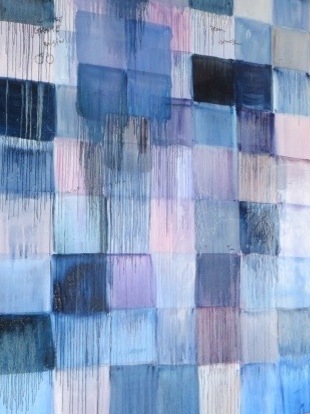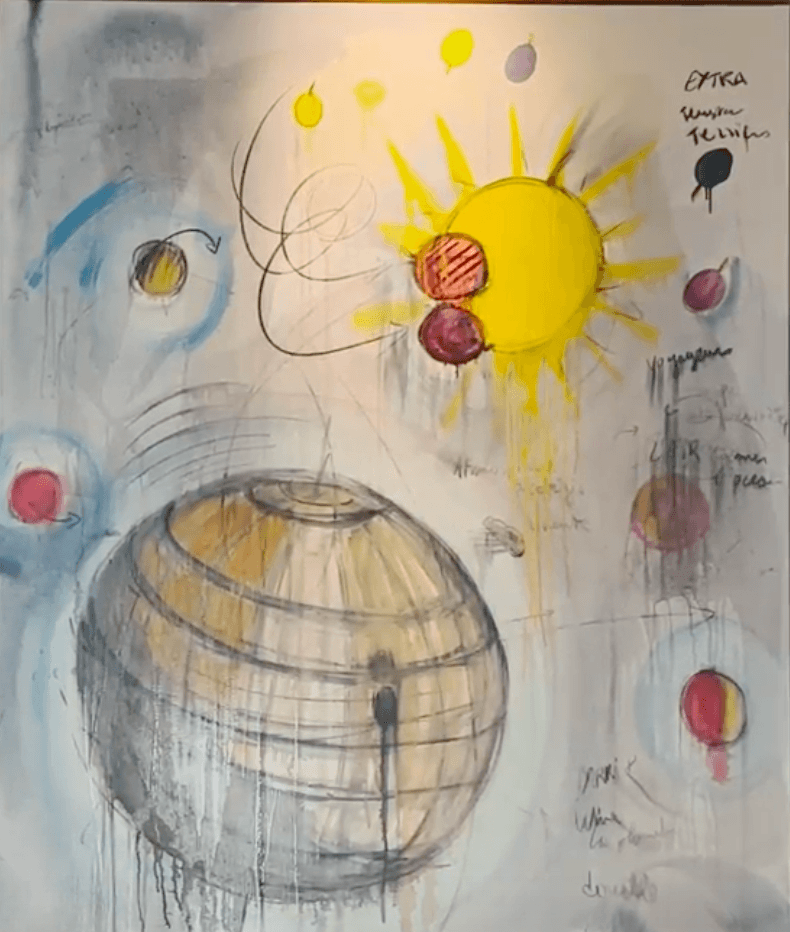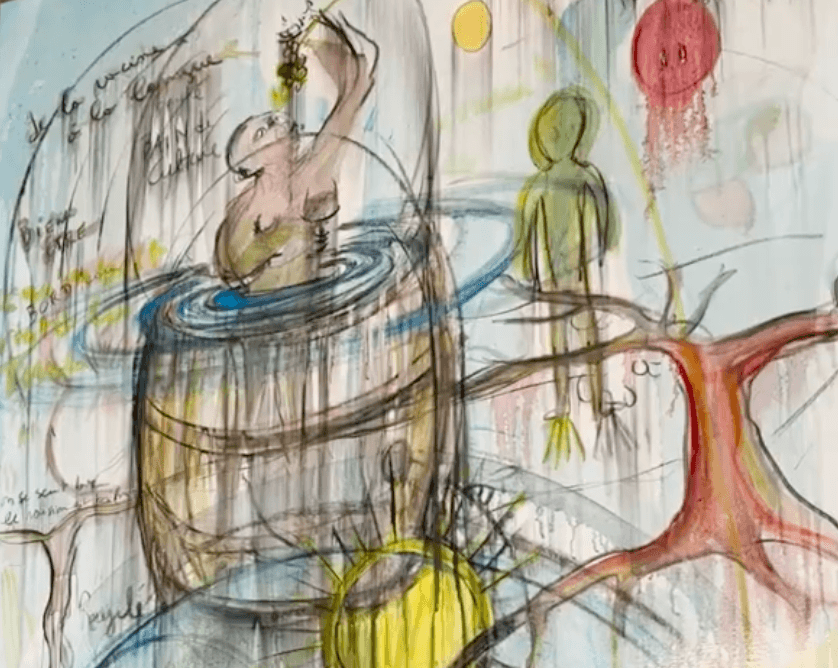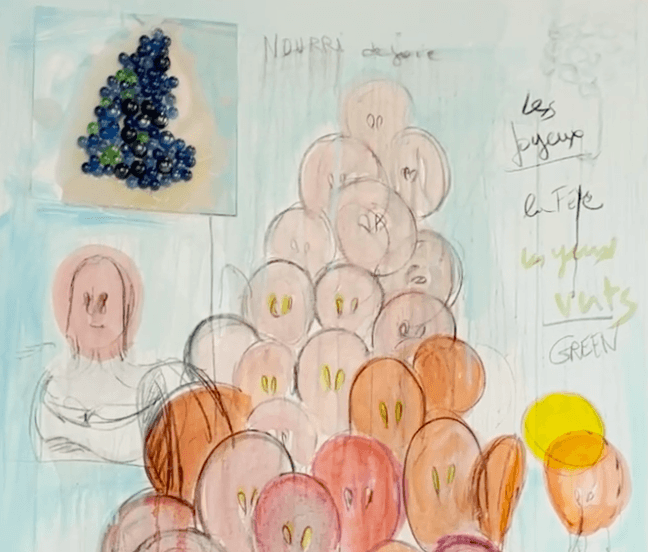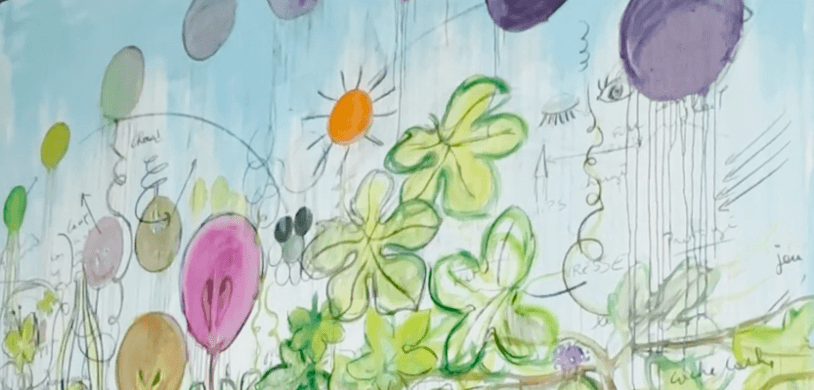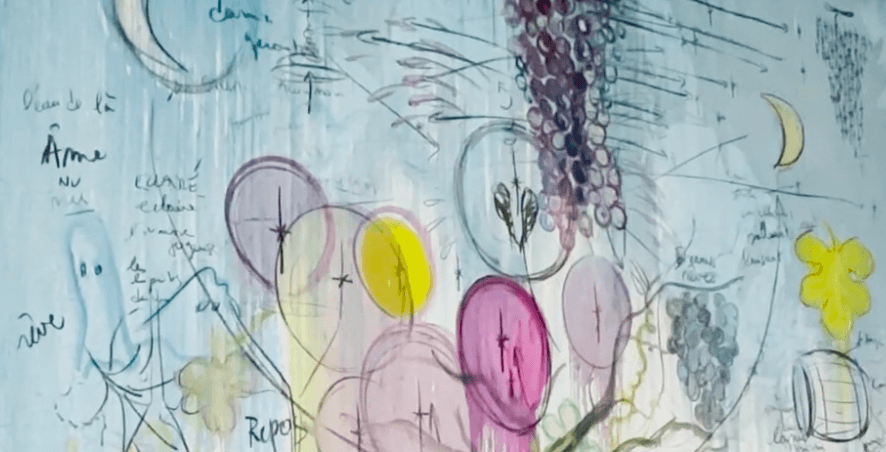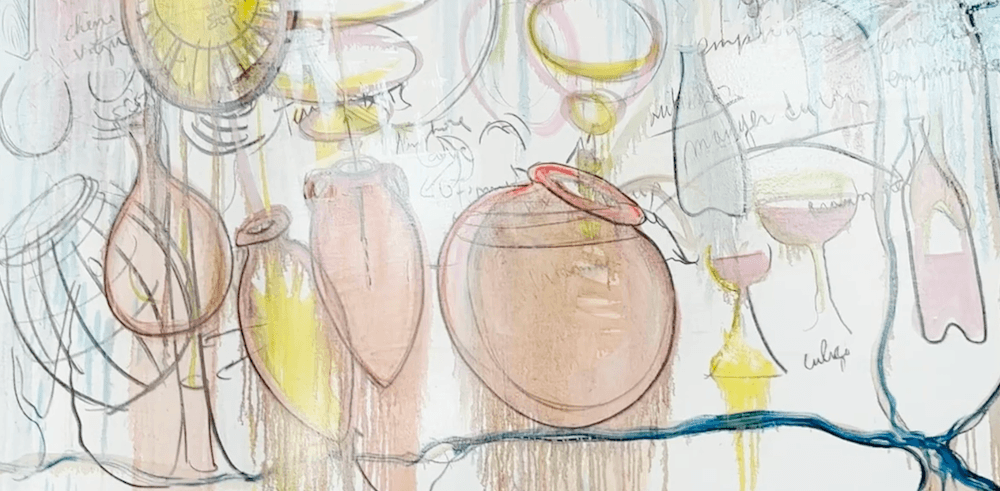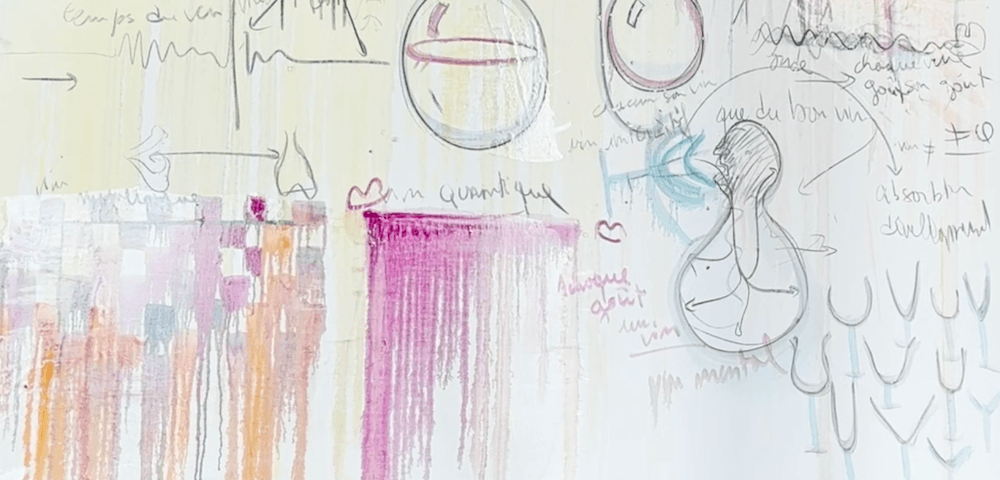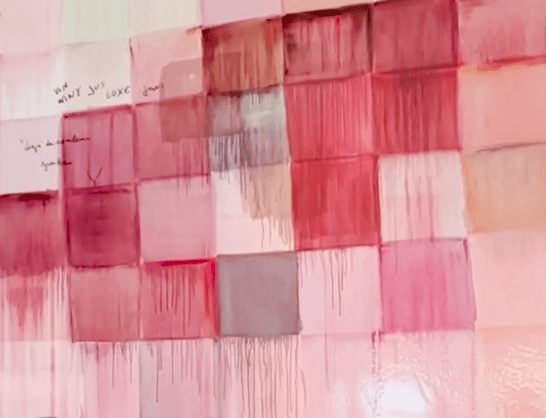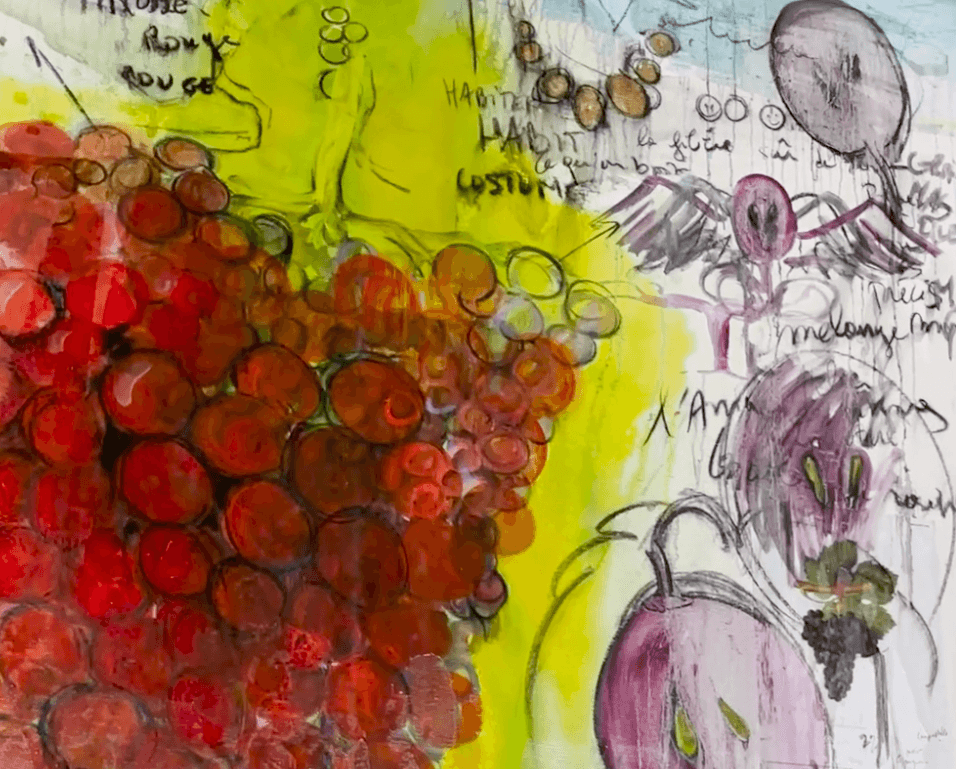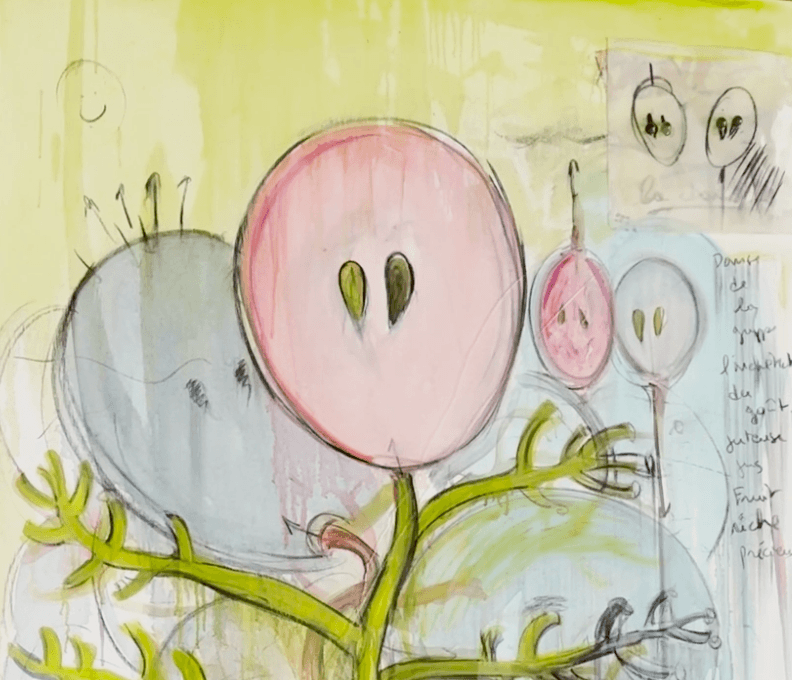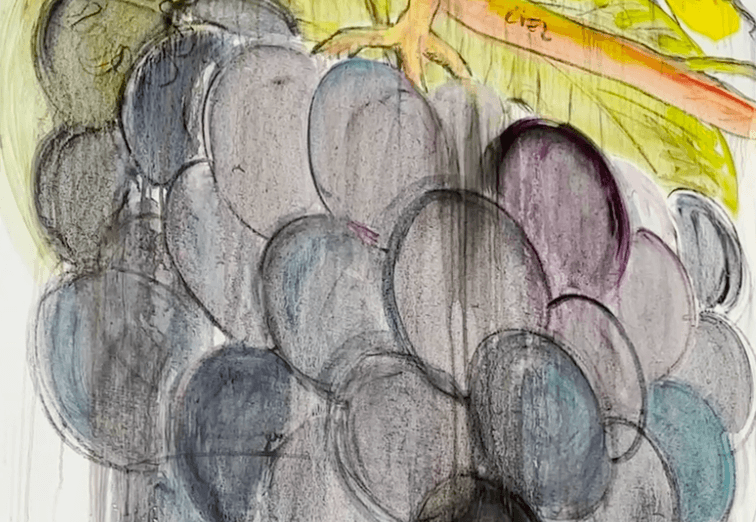Fabrice Hyber
The Château Pédesclaux has entrusted the artist Fabrice Hyber with the creation of a series of paintings for its reception rooms.
This unique collaboration gives rise to a fascinating encounter between contemporary art and the world of winemaking.
L'équipe
The first piece of the panorama, “L’équipe” (The Team), is a painting that gathers all the research hypotheses about the wine production cycle. It highlights the combination of natural elements and human factors. The formal analogy between a grape cluster and a bouquet of balloons serves as a reminder of how the team spirit of Château Pédesclaux is linked to a human story, the rugby passion of the Lorenzetti Family.
At the center of the painting, the assembled balloons form a cluster that immediately evokes that of freshly cut grapes. Swollen with water, sugar, sky, the blue grains whirl around as if they were escaping, ready to traverse the painting, a vibrant homage to the team that tirelessly and fervently orchestrates the wine’s compositions in the laboratory built for them: the cellar is indeed the place of this particular art, whose only acceptable overflow is the surplus liquid in the vats. This painting unfolds a veritable notebook of notes that evoke the necessary ingredients available to the team. Fluids, but also instruments, materials, formulas, constitute the first poetry of wine. The first principle remains the captivating pleasure of colored light. The invention of wine occurs each time the “juxe” flows, juice and luxury assembled together. If a cellar is a team, it accomplishes miracles “swollen with juice,” it is written in red next to the magical funnel, also bleeding. Hands at the ends of which grains have settled create an unexpected topology. The ripe fruit will become a fountain. Like in football, the team in the cellar is composed of a band of joyful but also knowledgeable tightrope walkers; they use their hands as well as their minds, they are the guardians of a game made visible in the secrets of the green sun, like the leaves, like a face (which moves tiny and at the bottom of the painting) from which springs forth through every hole a lifesaving and fertile jet.
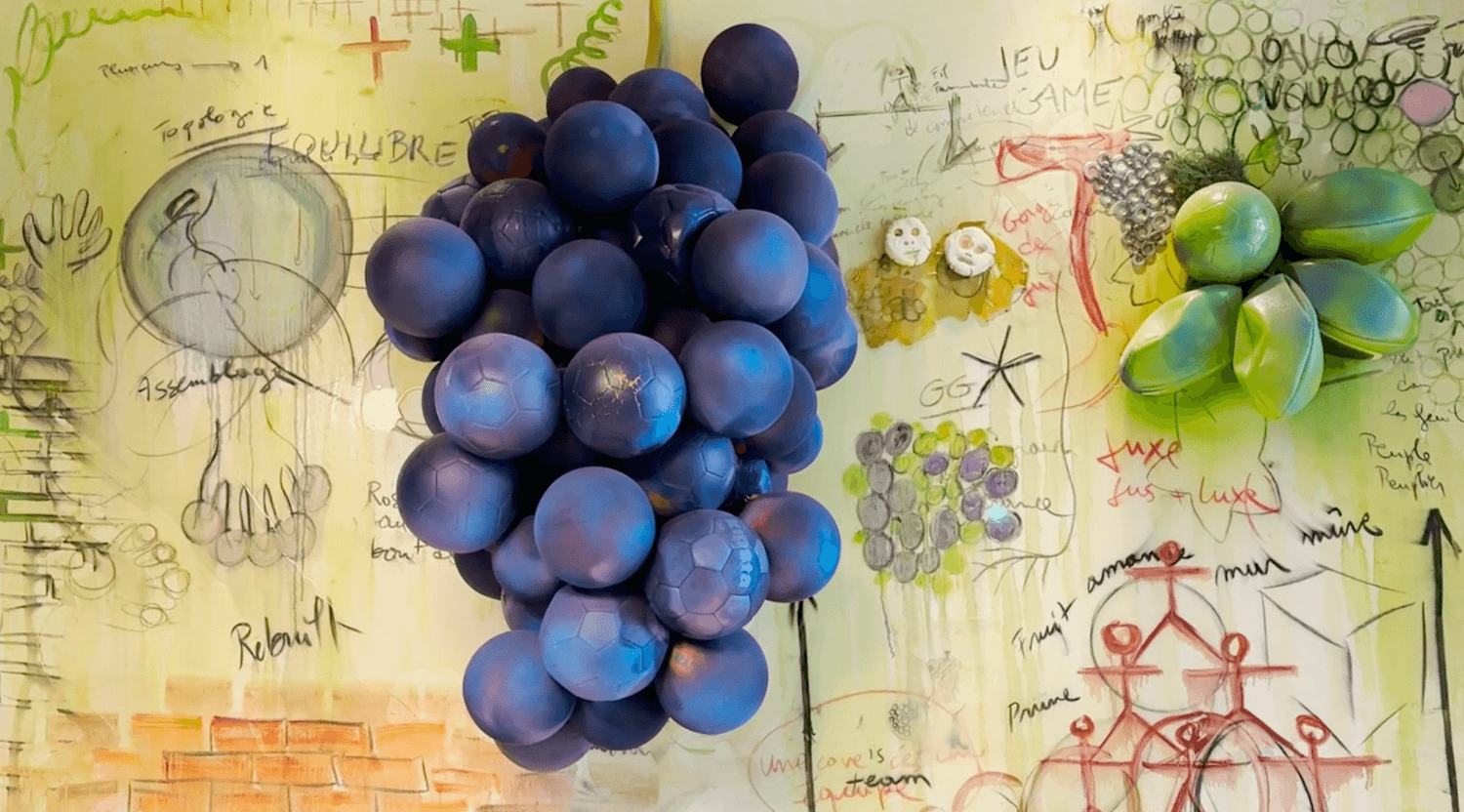
Barrique planetaire
The Earth is a vast terrain of fermentation. It takes the shape of a barrel, immersed in a universe where planets transform into enlarged grape grains on a cosmic scale.
Bien-être
The cellar master, immersed in the barrel, evokes the ancient techniques of winemaking. An experienced winemaker, steward, and keeper of secrets, invokes the knowledgeable part of craftsmanship in the face of the more unpredictable whims of nature (the wooden stave of the barrel adopts the curvature of the Earth).
Vin quantique
The development of the grape responds to the natural cycle of exposure to light. The annual journey of the sun around the Earth evokes the shape of a grape cluster. Why “quantum”? Because with each new element that comes into play (such as a change in brightness, a violent downpour, a period of intense heat), it redefines the formula of wine. Wine is not static. Quantum physics (as opposed to the theory of relativity) integrates life in all its variations.
Quantum life is the creator of fables. Thus, research is embodied in wine, constantly discovering new laws, forgotten formulas, territories that have not yet been studied, ingredients at their various stages are studied with impatient meticulousness, dissected and recomposed in innovative, professional, and precise ways. Nothing is minor; material life merges with legends, the imaginary touch grazes the fruit. This sequence of operations can be compared to the multiple visions offered by the landscape and the world: thus, one can look at the sun but also scrutinize the light or the photons to understand the movement of the sun. Here, photons traverse the earth, and this vision alone is enough to make the journey of the black or colored star dynamic.
Constructed according to a graphical device reminiscent of a sundial, the painting becomes a sun itself, covering the planet, revealing the successive definitions of a 360-degree landscape. Everything moves, folds in the light, multiplies, resisting the slightest breath, summoning precious revolutions, enchantments that come and go, translations of the moist, turbulent geography.
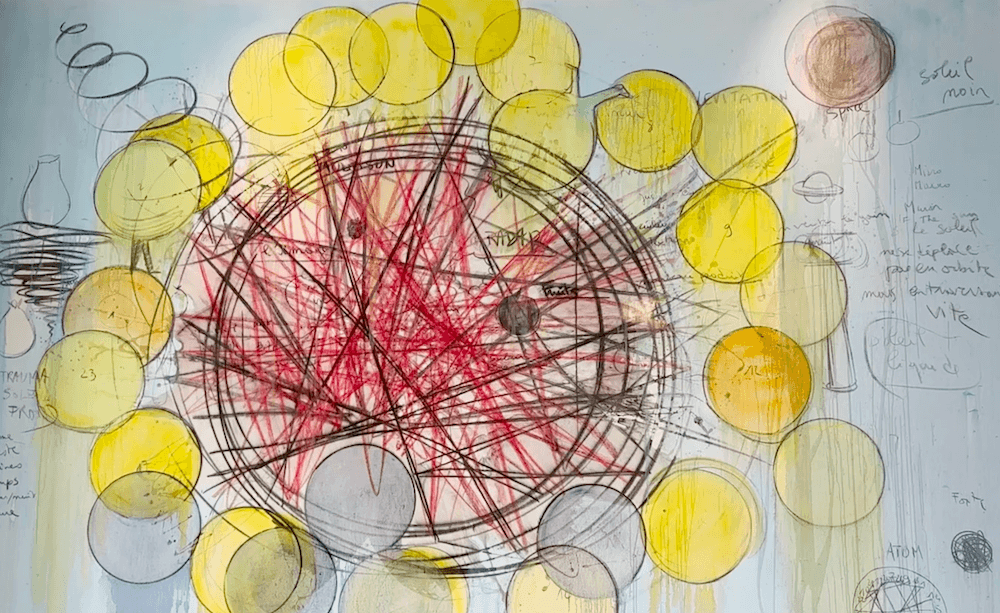
Fabrice Hyber has created eleven canvases which, when assembled, form a panoramic landscape. This landscape is not simply a representation of the estate, but a true exploration of Pédesclaux’s “BIO-TOP,” a concept that encompasses all the natural and human elements contributing to the creation of wine.
The artist utilizes his unique pictorial language to translate the complexity of the winemaking process. Colors, textures, shapes, and symbols combine to create a visual experience that evokes the different stages of transforming grapes into wine.
Biotope
A cluster in the festive shape of party balloons. The vineyard team and oenologists associated with the Château (there are about twenty of them in normal times at Pédesclaux) come together in the joy of harvest, the culmination of a season that has patiently brought together the technical skills of the production cycle.
Les vases commmunicants
Wine begins with the vine. Therefore, the Château begins with the architecture of the vine, intimately linked to its environment (rainbow, atmosphere, air, and water currents). Respecting the grape means first identifying the virtuous circuits of its biotope’s nutrition. The vine resembles a reservoir that absorbs water through capillarity, a metaphor for the close links that unite the elements: earth, sky, and water.
Deliberately against the laws of perspective, the grammar of this baroque tableau unfolds, its multiple narratives literally dancing on surfaces unconcerned with economy. A vine is a strange miracle. It absorbs the waters of the sea and the Garonne that vibrate below. The vine’s leaves induce hallucinations; they become receptacles, circles in the water; at the bottom of the waters, the vine grows like Viviane. For the history of this painting rests on the principles of a shared royalty. Like in the invention of a family where one learns, where knowledge is disseminated. Everything seems calculated to live in self-sufficiency. The cellar is a kingdom. In its green bubble, a fish seeks air; to the left of the painting, men, shadows form conspiracies, notes seem to have been hastily scribbled, thus we slide, as if observing the different stages of winemaking, and reinventing them. A character, with a ruff, carries the seeds of these knowledges. In the left corner, a monk testifies to the presence of rare beverages within abbey walls. A landscape is built where water, sky, and earth mingle; an unreal perspective now pushes, causing dizziness, magic, and unprecedented visions. Two ghostly beings (two grape grains?) each double their heads with a halo-bubble. Angels? Visitors from another time? The grain shivers, claiming its inalienable right to insolence.
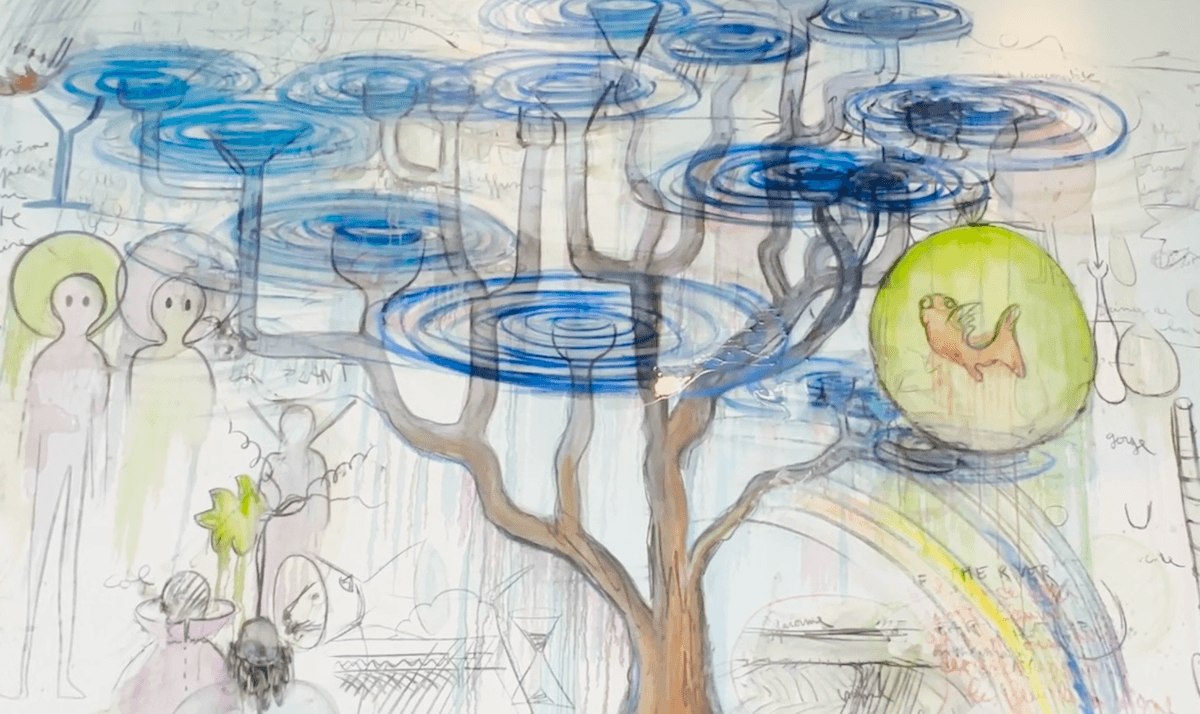
Le jour l'été
L'hiver la nuit
Le vin du passé
Le vin du futur
Fabrice Hyber draws inspiration from the ancestral tradition of winemaking but approaches it with an innovative perspective. He weaves connections between art and science, biology, geology, and astronomy, thus highlighting the multiple dimensions of Pédesclaux’s “BIO-TOP.”
Fabrice Hyber’s work invites the visitor to immerse themselves in the universe of Château Pédesclaux and discover the richness and complexity of the wine creation process. It’s an invitation to a unique sensory and intellectual experience, where art and winemaking converge to celebrate the beauty and mystery of nature.
Nuanciers
In the form of a diptych, the variation of colors of grapes and wine. They are not identical, recalling the chromatic work of fermentation. The color of the grapes varies around indigo blue, with subtle variations in shades depending on day and night. The color of the wine oscillates around a garnet red, a hue composed of natural pigments known for the dark density of its reflections.
Some paintings and certain grapes secretly marry. A connection binds them, constructing stories sometimes difficult to understand, sometimes disarmingly simple. They are composed of sounds. Words accompany them. Songs carry them. Here, it was necessary to show the palette of colors, to reveal the nuances of black grapes and red wine. To appreciate them. To compare them. To taste them. To recognize the know-how of each. Two canvases, a diptych, share this hymn to colors. Like in watercolor techniques, transparency allows for revealing the mysteries and activities of the cellar. But also to emphasize the place occupied by evaporation (the angel’s share is never far away). At the beginning, the cluster finds its geography in an infinity of colored and juicy squares. It flows over the colors. The nuances of black grapes and red grapes share the territory of the paintings. Then the blacks turn blue, undergo mutations, double, separate. To abandon themselves and transform themselves until the reds invade the meadows, the thickets, the screens stimulated by luxurious juices like abundant rains. There is liquid left in us. Revolving around blue, gray, blue-gray, pink, pink-gray, red. Moving colors, generous, joyful, vital veins.
